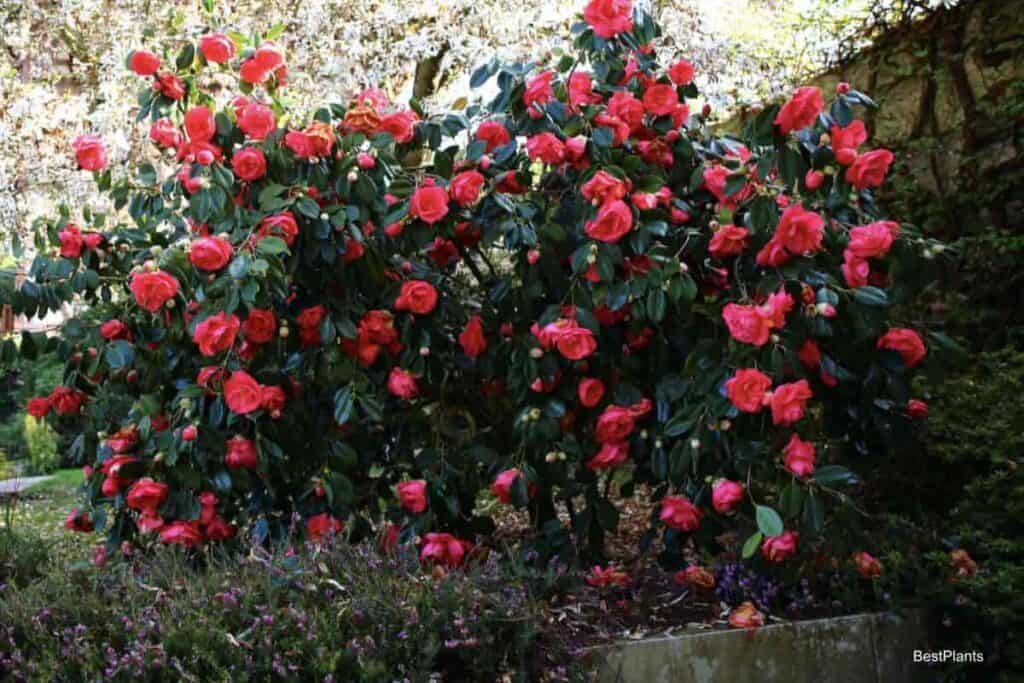Most successful camellias are found growing on slightly acid soils, and the drainage must be good. Such soils are usually sandy, well-drained, and well aerated.
Drainage and soil aeration for Camellias are equally as important as soil acidity, if not more so. Yet so much emphasis has been given to the need for acidity that many growers and homeowners ignore drainage and aeration.

Some of these commercial and amateur growers continue to apply acidifying materials long after the soil has been made sufficiently acid, and from this practice, only harm can result.
Other conditions being favorable, camellias will grow well over quite a wide range of soil reactions. However, they do not do as well in strong alkaline soils. It’s true; nevertheless, they are seldom killed by such conditions.
Experience has shown that soils differ considerably as to their pH optimums. (The pH numbers, indicate relative acidity or alkalinity – pH 7.0 being neutral, acidity increases as the numbers become lower, while alkalinity increases as the numbers become higher.)
Some pineland soils, which have a pH value of about 5.0, will grow better camellias if sufficient lime is used to raise the pH to 5.5 or 6.0. However, if so much lime is added that the soil becomes neutral (pH 7.0), productivity may fall off sharply even though fertilizers have been added.
On the other hand, strongly alkaline soils of pH 8.0 to 9.0 may become highly productive if the pH is reduced to 7.0 by using acidifying amendments. In contrast, further reduction to pH 5.5 may release nutrient elements in unbalanced and toxic amounts and cause injury instead of benefits.
Thus two soils may have very different optimums, one originally acid being made most productive when its pH is raised to about 5.5, the other originally alkaline being made most productive when its pH is lowered to about 7.0.
Are Some Soils Are Better Than Others?
We find, too, that certain soils yield more readily than others.
For example, some of the soils along the Atlantic Coast may be reduced as much as 2 pH units with a given amount; of sulfur, while the same amount of sulfur will reduce certain soils along the Gulf Coast only 1 pH unit.
When garden lime is used to overcome soil acidity, we find that different soils require different amounts to produce the same change, such as pH 5.0 to pH 6.0.
While the reaction of the soil does affect the availability of plant foods, it should not be assumed that pH value tells the whole story.
A pH 7.0 may show available calcium of 40 parts per million; another pH 5.0 may show available calcium of 100 to 125 parts per million. In either case, camellias may grow well.
A third pH 5.0 may contain manganese and aluminum in toxic amounts and thus be a poor medium for camellia culture. This latter condition is frequently brought about by the too generous use of chemical acidifiers such as sulfur and aluminum sulfate.